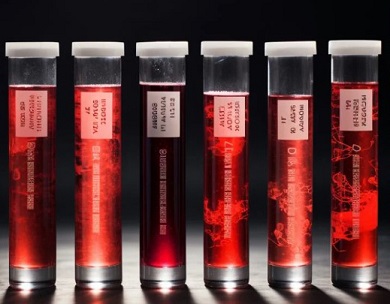Japanese Study Finds That Growth Differentiation Factor-15 Can Be Used As A Predictive Biomarker Of Long COVID In Non-Hospitalized Patients
Nikhil Prasad Fact checked by:Thailand Medical News Team May 02, 2024 11 months, 3 weeks, 3 days, 14 hours, 36 minutes ago
Long COVID News: Long COVID, a term coined for the lingering health issues following a SARS-CoV-2 infection, has become a puzzling phenomenon. While many recover, a significant portion of individuals continues to experience symptoms for weeks or even months. Understanding and predicting the trajectory of long COVID is crucial for better patient management and treatment outcomes.
 Growth Differentiation Factor-15 Can Be Used As A Predictive
Growth Differentiation Factor-15 Can Be Used As A Predictive
Biomarker Of Long COVID In Non-Hospitalized Patients
Exploring Biomarkers in Long COVID: An Insightful Retrospective Study
In a groundbreaking effort, researchers at Tohoku University Hospital embarked on a retrospective cohort study to investigate potential biomarkers for long COVID. Unlike previous studies focusing on hospitalized patients, this study that is covered in this
Long COVID News report targeted non-hospitalized individuals, recognizing the need for tailored biomarkers specific to this population.
Mitochondrial Dysfunction: The Key Player in Long COVID
The study delved into mitochondrial dysfunction, a factor intricately linked to various diseases. Mitochondria's regulatory role during infection and its association with mitokines, such as growth differentiation factor-15 (GDF-15) and fibroblast growth factor-21 (FGF-21), sparked the researchers' curiosity. Mitokines, reflecting mitochondrial dynamics, were hypothesized to hold clues about long COVID's onset and progression.
The Study Unfolds: Insights from Data Analysis
The study commenced with 197 participants during the acute phase of COVID-19. Subsequent blood samples collected from a subset after three months revealed intriguing findings. Of the 13 cases studied longitudinally, seven fell into the long COVID group, characterized by persistent fatigue, cognitive decline, and pain.
GDF-15 Emerges as a Promising Predictive Biomarker
Serum levels of GDF-15 during the acute phase showed a significant association with long COVID symptoms post-infection. The study identified a threshold value of 965 pg/mL, exhibiting moderate sensitivity and specificity. Elevated GDF-15 levels in the acute phase were indicative of subsequent long COVID symptoms, providing a potential early warning system for patient management.
FGF-21: A Tale of Diagnostic Potential
While serum FGF-21 levels didn't show significant differences in the acute phase, a notable increase was observed in the long COVID group after three months. This elevation hinted at FGF-21's potential as a diagnostic marker for long COVID, warranting further investigation into its role and implications.
Mitochondrial Dysfunction and Long COVID Pathophysiology
The study's findings shed light on the intricate relationship between mitochondrial function and long COVID. Mitochondri
al modulation during the acute phase seemed to influence the course of COVID-19, with implications for long-term symptom development. However, the dynamics of mitokines post-recovery remained unclear, necessitating continued exploration.
Comparative Analysis: Inflammatory and Vascular Endothelium Markers
Contrary to expectations, inflammatory markers didn't exhibit significant associations with long COVID in non-hospitalized patients. This contrasted with previous studies involving hospitalized individuals, highlighting the need for distinct biomarkers tailored to different patient cohorts.
Endothelial Dysfunction: Unveiling Potential Links to Long COVID
The study's observation of high serum VCAM-1 levels in both acute and chronic phases hinted at underlying vascular endothelium dysfunctions. This aspect, often overlooked in previous studies, suggested potential multi-organ effects related to thrombosis in long COVID patients.
Challenges and Future Directions
Despite its insights, the study faced limitations, including a small sample size and the absence of long-term follow-ups beyond three months post-onset. Future research endeavors must address these challenges to gain a more comprehensive understanding of long COVID's pathophysiology and predictive biomarkers.
Concluding Remarks: Towards Enhanced Long COVID Management
In conclusion, the study's identification of GDF-15 as a predictive biomarker offers a promising avenue for early detection and management of long COVID in non-hospitalized patients. Continued research into mitochondrial function, mitokines, and vascular endothelium markers is crucial for unraveling the complexities of long COVID and improving patient outcomes.
The study findings were published in the peer reviewed journal: Cureus.
https://www.cureus.com/articles/245654-growth-differentiation-factor-15-is-considered-a-predictive-biomarker-of-long-covid-in-non-hospitalized-patients#!/
For the latest
Long COVID News, keep on logging to Thailand Medical News.
